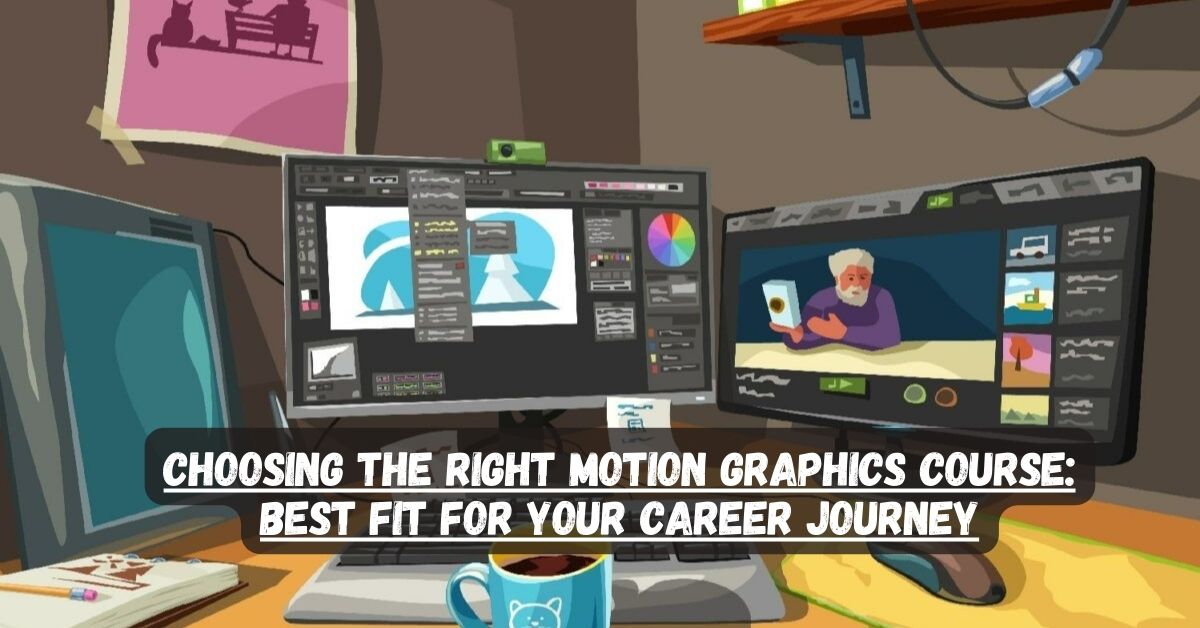Choosing the Right Motion Graphics Course: Best Fit for Your Career Journey

Are you ready to dive into the world of motion graphic design but feeling overwhelmed by the plethora of courses available? Choosing the right motion graphics course can significantly impact your career journey, setting you on the path to success in the dynamic field of digital art. To ensure you make an informed decision, let’s explore what factors you should consider when selecting the best fit for your aspirations.
1. Define Your Goals:
- Determine what you want to achieve through a motion graphics course. Are you aiming to enhance your skills for personal projects or seeking professional advancement in the industry?
- Clarify your specific areas of interest within motion graphic design, such as animation techniques, visual effects, or typography.
2. Research Course Content:
- Thoroughly examine the curriculum of each motion graphic course you’re considering. Look for comprehensive coverage of fundamental principles as well as advanced topics relevant to your goals.
- Check if the course incorporates hands-on projects, case studies, and real-world applications to provide practical experience.
3. Accreditation and Reputation:
- Choose motion graphic courses offered by reputable institutions or platforms known for delivering high-quality education in digital art.
- Look for accreditation or endorsements from industry experts, organizations, or alumni testimonials to validate the credibility of the course.
4. Instructor Expertise:
- Evaluate the qualifications and experience of instructors teaching the motion graphic course. Experienced professionals with a strong background in the field can offer valuable insights and guidance.
- Seek instructors who actively engage with students, provide constructive feedback, and stay updated with industry trends.
5. Flexibility and Accessibility:
- Consider the flexibility of course schedules and formats to accommodate your existing commitments and learning preferences. Look for options such as self-paced learning, live sessions, or blended formats.
- Assess the accessibility of course materials, resources, and support systems to ensure a seamless learning experience, especially if you’re balancing studies with other responsibilities.
6. Alumni Success Stories:
- Research the career trajectories of past students who completed the motion graphic course. Positive outcomes, such as job placements, portfolio showcases, or industry recognition, can indicate the course’s effectiveness in preparing professionals for success.
- Reach out to alumni or online communities to gather insights and recommendations based on their firsthand experiences.
7. Industry Networking Opportunities:
- Explore motion graphic courses that offer networking opportunities with industry professionals, guest lectures, workshops, or internships. Building connections within the industry can open doors to career opportunities and collaborations.
- Look for courses affiliated with professional associations, studios, or companies that actively support talent development and recruitment.
8. Cost and Value Proposition:
- Compare the costs of different motion graphic courses against the value they offer in terms of educational content, resources, support, and career prospects.
- Consider factors such as scholarships, financial aid, installment plans, or discounts to make the course more affordable without compromising on quality.
9. Continuous Learning and Updates:
- Choose motion graphic courses that emphasize continuous learning and provide access to updated content, resources, and industry insights to stay ahead of emerging trends and technologies.
- Evaluate the course’s commitment to ongoing support, alumni networks, or advanced training opportunities for career advancement and skill refinement.
In conclusion, selecting the right motion graphics course in India requires careful consideration of your goals, course content, accreditation, instructor expertise, flexibility, alumni success, networking opportunities, cost, and commitment to continuous learning. By investing time and effort in researching and evaluating your options, you can choose a course that aligns with your career aspirations and sets you on a path to success in the dynamic field of digital art.
Remember, your journey in motion graphic design is not just about acquiring skills but also about nurturing your creativity, passion, and professional growth. Choose wisely, embark on your learning journey, and unleash your creative potential in the exciting world of motion graphics!
Also read – Crafting Futures: Exploring Ahmedabad’s Top Design Colleges
